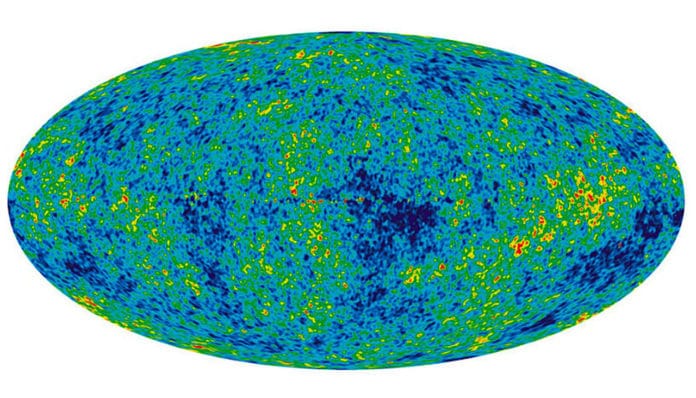Einstein’s field equations of general relativity describe the universe’s temporal evolution, from the Big Bang to the present. In any case, there are as yet various questions about cosmological dynamics, whose origins lie in assumed disparities between theory and observation.
One of these open questions is: Why is the universe in its present state so homogeneous for large scales?
It is expected that the universe was in an outrageous state not long after the Big Bang, portrayed specifically by strong fluctuations in the curvature of spacetime. During the long extension process, the universe then evolved towards its present state, which is homogeneous and isotropic for large scales—in simple terms: the universe looks the same everywhere.
This is inferred, among other things, from the measurement of the so-called background radiation, which appears highly uniform in every direction of observation.
This homogeneity is amazing. Even two regions of the universe that were causally decoupled from one another—i.e., they couldn’t exchange data—still show similar background radiation estimations.
The supposed inflation theory was developed to resolve this alleged inconsistency, which suggests a period of extremely after the Big Bang, which can clarify the background radiation’s homogeneity.
Notwithstanding, how this phase can be clarified regarding Einstein’s hypothesis requires various alterations of the theory, which appear to be counterfeit and can’t be confirmed directly.
Up to now, it was not clear whether the homogenization of the universe can be explained completely by Einstein’s equations. This is the complexity of the equations and the associated difficulty of analyzing their solutions—models for the universe—and predicting their behavior.
Such analyses are based on modern mathematical methods in the field of geometric analysis. Until now, these methods could only achieve such results for small deviations from the homogeneous spacetime geometry.
David Fajman from the University of Vienna has now succeeded for the first time to transfer these methods to the case of arbitrarily large deviations.
This study suggests that gravity can accelerate the homogenization of spacetime as the universe evolves.
Fajman has developed a method to investigate fundamental open questions of cosmology, such as why today’s universe appears so homogeneous.
The results show that homogenization in the investigated class of models is already completely explained by Einstein’s theory and does not require any additional modifications.
Journal Reference:
- David Fajman. Future Attractors in 2+1 Dimensional Λ Gravity, Physical Review Letters (2020). DOI: 10.1103/PhysRevLett.125.121102
